The Fine Art of Music: Cece June's lovely, emotional songs are the result of listening and looking
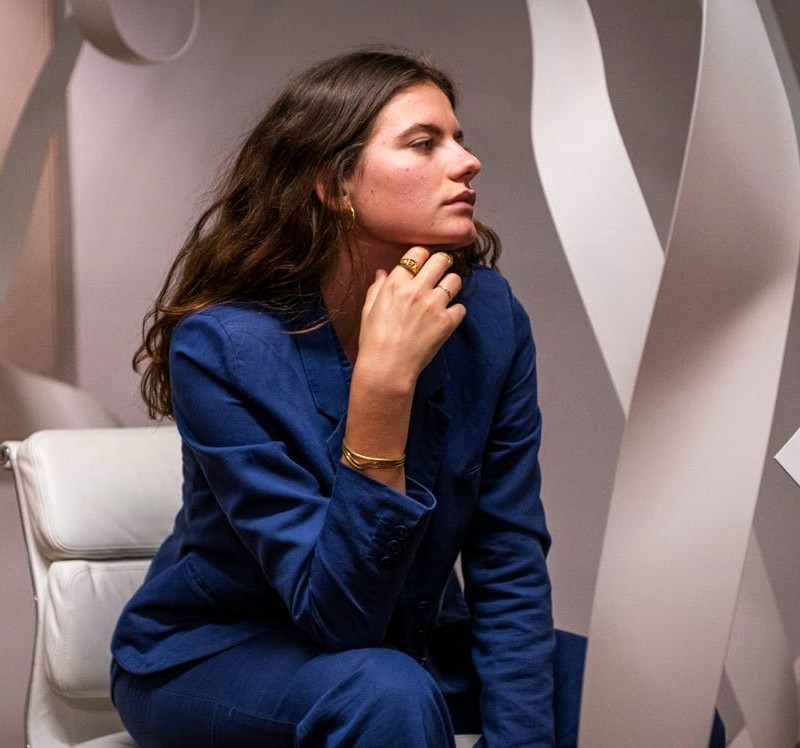
Cece Duran was born and raised in Barcelona, where she is currently spending her summer.
But it's in Ann Arbor where she's building her name as a singer-songwriter under the guise Cece June.
In 2021, June released an EP, Pieces, shot a video for the single "Mine," and played shows at venues in downtown Ann Arbor, and the University of Michigan’s annual Springfest.
June is back with a new single, “Over," which she made with friends from U-M. While the sadder side of Spanish folk music courses through June's songs, she also cites England's Radiohead, Ireland's Damien Rice, and America's Bon Iver—no strangers to melancholy melodies—as influences.
We caught up with June to discuss her acoustic-and-electronics single "Over," the influence of fine art on her music, and her future.
Just Want You to Know Who I Am: Ann Arbor indie-rocker Ceolsige introduces herself to the world on self-titled debut EP

Ceolsige just wants to introduce herself.
“Right now, with my music, all I’m trying to do is just let people know who I am," said Ann Arbor indie-rock singer-songwriter Kelsey Detering, who just released her debut EP under the artist moniker Ceolsige (pronounced see-ole-sidge), the old English variant of her first name.
"Especially, with this EP, I’m not trying to give any specific take on myself or anything. This is a taste of everything about me in one little package. I’m giving people that so they’ll know who I am as an artist. ‘Ceolsige’ is still me, that’s why I chose it. I don’t overthink my identity that much; I just do what feels right.”
Ceolsige eagerly follows her instincts across four honest, mighty tracks that question life, love, and society. The self-titled EP’s introspective lyrics, vigorous instrumentation, and arena-sized arrangements invite listeners to reflect and travel alongside her.
“What comes across a lot of my music right now is uncertainty … because of the age I’m at and time going by. I’m like, ‘OK, what’s gonna happen in my life? Am I gonna meet someone? Am I gonna enjoy things? Are we gonna fix this broken world? Are we going to improve things?” said Detering, a University of Michigan alumna and Ann Arbor School of Rock vocal/piano instructor.
“That gets played up more in people’s minds now, especially because uncertainty in life is heightened everywhere and all the time. I’ve picked up even more on that now.”
AADL's new exhibit, "Capturing an Era: The Progressive Lens of Doug Fulton," showcases nearly 30 years of pictures and prose by The Ann Arbor News staffer
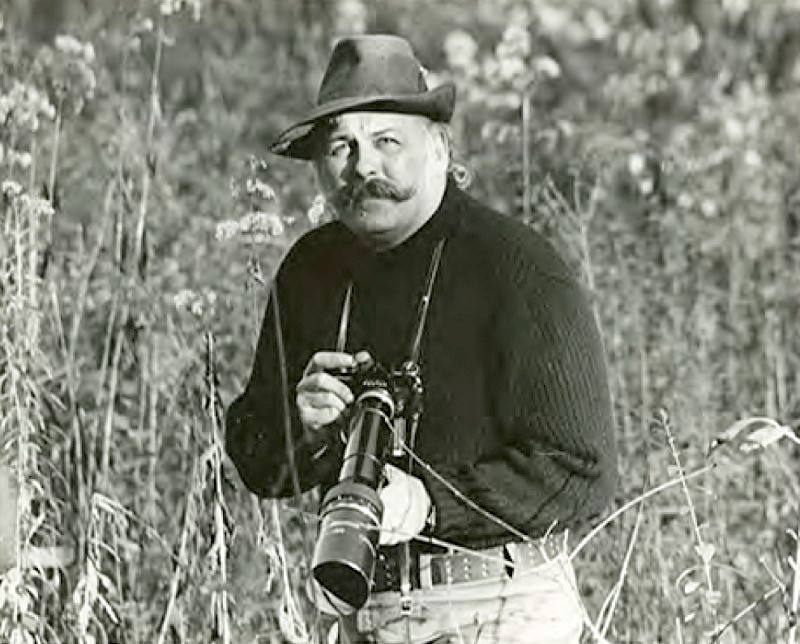
Before social media became the defacto visual archives of our times, newspapers employed a full complement of photographs to capture breaking news and everyday occurrences. It was through their lenses that history was recorded, from the significant to the mundane, with the photographers mixing a fine artist's attention to framing and detail along with a documentarian's eye and mentality toward preserving a fleeting moment for eternity.
Doug Fulton worked as a photographer and writer for The Ann Arbor News from 1954 to 1983. While he was a prolific photographic chronicler of our community—from Chrismas cookie making, neighborhood parades, and blues and rock concerts to structure fires, winter storms, and University of Michigan sporting events—he's also remembered for his column covering Michigan nature, parks, hunting, fishing, and the environment, which he illustrated with his photos.
The Ann Arbor District Library is the home for The Ann Arbor News' archives, and the Old News team at AADL culled through thousands of images to curate a new exhibit:
Capturing an Era: The Progressive Lens of Doug Fulton.
The exhibition is displayed on the second floor of AADL's downtown location from June 10 to September 5, and it features numerous Fulton photos and articles from throughout his 29-year-career at The Ann Arbor News. Additionally, two walls in the exhibit feature blues and nature photos provided to the library by Fulton's daughter Andrea and son Bruce.
You can read more about the exhibit and Fulton's life here, and you can browse all the photos in AADL's Old News archives here.
Then come back to Pulp and read my interview below with Andrea Fulton-Higgins about her father's background, how he came to learn photography in the Air Force, and his love of music and nature.
"Last Night a Camera Saved My Life: The Photography of Doug Coombe" celebrates one of Washtenaw County's finest chroniclers of Michigan music

If you've been to a concert in Washtenaw County in the past 30 years, there's a good chance Doug Coombe was at one of them.
From Ypsilanti basement shows to Hill Auditorium and everywhere around Southeastern Michigan, the long-time Ann Arbor record-store clerk turned first-call photographer has documented local and touring artists of all genres with an exacting eye and an unrelenting passion for music.
The genial Coombe's dynamic concert photos are like energy traps, capturing the exact moment a performer has exploded with passion, while his promotional and journalistic musician photos present bands in creative environments that convey their sounds and attitudes through the images.
Coombe loves what he does and the musicians love him right back. You can actually tell the artists like to be photographed by Coombe just by looking at his pictures.
For real: Everybody likes Doug.
CultureVerse is a new-ish gallery space in downtown Ann Arbor and its latest exhibit, Last Night a Camera Saved My Life: The Photography of Doug Coombe, is a love letter not only to the Washtenaw County and Southeast Michigan music scenes but also to the man who captured these small, fleeting moments for all of eternity.
The Return of AADL's Fifth Avenue Press: Local authors celebrate the release of their books on May 22

The Ann Arbor District Library's Fifth Avenue Press, which started in 2017, helps local authors produce a print-ready book at no cost—from copyediting to cover design—and the writers retain all rights. In return, the library gets to distribute ebooks to its patrons without paying royalties, but authors can sell their books—print, digital, or audio—in whatever ways they choose and keep all the proceeds.
Fifth Avenue launches its fourth round of books on Sunday, May 22, with a book-release celebration from 1-3 pm in the lobby of AADL's downtown location, featuring author readings from many of the imprint's 10 new titles.
Click the book titles below to jump to interviews with the authors and illustrators:
In Real Life: Indie rocker Kelly Hoppenjans shares pandemic-era experiences on “Can’t Get the Dark Out”

Kelly Hoppenjans prefers to view love and life through a realistic lens.
The Ann Arbor indie-rock singer-songwriter and guitarist shares a real-life account of pandemic-era relationships, life changes, and personal growth on her introspective new EP, Can’t Get the Dark Out.
“This pandemic has been a really tough time to be alone, and it’s made it difficult to navigate changing relationships, too.," she said. "I wrote ‘Love of My Life (In My Living Room)’ about my frustration with online dating, and a few months after writing it met the love of my life through a dating app.”
Hoppenjans, who relocated from Nashville, Tennessee to pursue a doctorate in musicology at the University of Michigan, said, "By the time I met him, I’d already decided I was leaving town for my doctorate, and I wrote ‘Parallel Lines’ about the irony of meeting someone when I had one foot out the door, wanting to leave town but not him. He moved up here with me, so that worked out in the end.”
On Can’t Get the Dark Out, Hoppenjans dissects past heartbreak, navigates newfound love, and weathers interstate moves across five journal-entry-inspired tracks. The 20-minute EP seamlessly flows through alt-rock and folk-rock sensibilities with forthright lyrics.
“I feel like sometimes when we envision positive things, like love or marriage or children coming to us in the future, we think, ‘That will fix everything,’ like the struggles will evaporate once we achieve those goals. That’s just not how it works,” she said.
“Being in love has brought so much joy to my life, and it’s also one of the hardest things I’ve ever done. It doesn’t fix anything magically … all the baggage we bring with us … it haunts us in our relationships, and we work through it together.”
Hoppenjans will share her Can’t Get the Dark Out experiences and songs during a May 6 EP release show at The Bling Pig with special guests Ani Mari and Clay in the Woods.
Answer Me This: U-M lecturer Phil Christman explains it all in his new essay collection, “How to Be Normal”
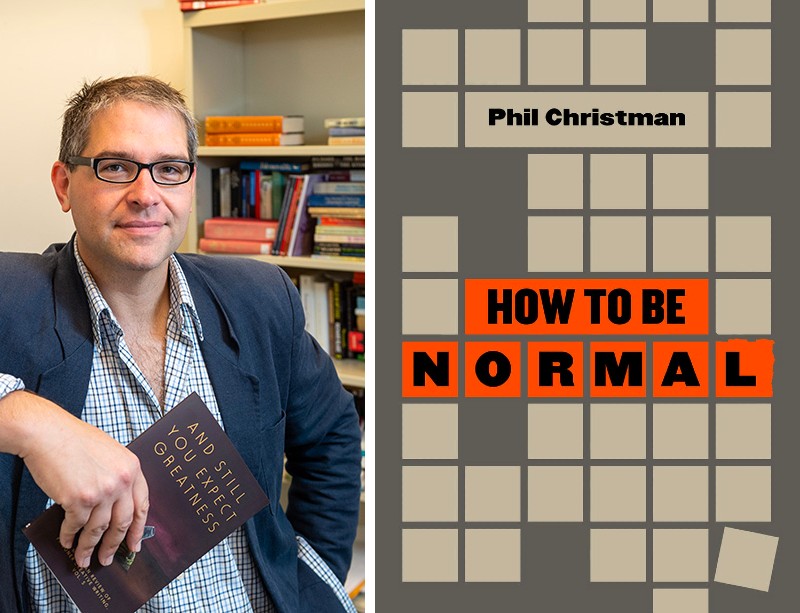
Phil Christman takes on the problem of How to Be Normal in his new essay collection by interrogating broad categories of life. Like his earlier book, Midwest Futures, the essays are wide-ranging. For How to Be Normal, Christman tackles topics including “How to Be a Man,” “How to Be Religious,” and “How to Care.” Christman takes unexpected turns by bringing in references including Star Wars, Mark Fisher, and Marilynne Robinson.
One of Christman’s essays, “How to Be Cultured (I): Bad Movies,” begins with a reflection on watching such films as a shared hobby his father. He analyzes Mystery Science Theater 3000, failings of adults seen through a child’s eyes, Ava DuVernay’s adaptation of A Wrinkle in Time, and Raiders of the Lost Ark, among others. The issues in the films can be generalized, as Christman writes:
Time is punctuated by motherhood, the pandemic, and a family rupture in poet Carmen Bugan’s new collection, "Time Being"
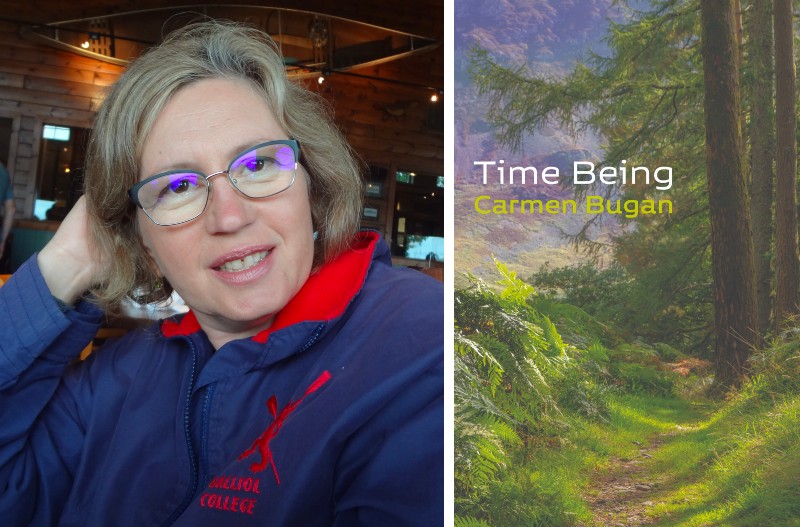
Carmen Bugan’s new poetry collection, Time Being, shows how the coronavirus has meant many different things to many people and also that it put us into our own bubbles. Bugan’s isolation includes her children, garden, home in New York, connection to Michigan, and eventual divorce. Her poems chronicle the months of isolation, motherhood, the excessive losses to the virus, and the ways that the pandemic, despite upending everything, was nevertheless not the only thing happening in 2020 and 2021.
Bugan turns her outlook inward in Time Being. Part I serves as foreshadowing with the poem “Water ways” when the outcome of making footsteps on sand is that “the ocean erases them impatiently” as a parallel to the later repetitive, near-daily baking during the pandemic. In Part II when the pandemic strikes, the poems question, “But who could have imagined our / new lives six months ago?” and “Who would have known we’d be staying home / Nearly a year, the house growing around us / Like a shell, shutting out the life we knew?” The situation could not have been anticipated, as “Water ways” alludes:
Transcontinental Travelogue: Country-pop singer-songwriter Katie Pederson recounts her solo journey on "Limitless"

In November 2019, Katie Pederson embarked on a solo, transcontinental road trip.
The monthlong expedition allowed the pop-country singer-songwriter and pianist to process past sorrows and reconnect with herself before relocating to Tennessee from Michigan.
“When I left Michigan, I knew I was gonna move to Nashville, but I didn’t quite know … so I just left,” said Pederson, who hails from Ann Arbor.
“I wanted to go to the mountains to get some perspective, so I went out to Alberta, Canada, and stopped at hostels along the way in North America. I did a lot of hikes in different areas, read a lot of Mary Oliver’s poetry, and met a lot of really wonderful people.”
Those therapeutic experiences provided the magical inspiration for Pederson’s new sophomore album, Limitless, and helped her explore a sense of renewal within a nature-rich landscape.
Pederson will recount her Limitless journey during an April 24 album release show at The Ark with special guest Grace Theisen, a Kalamazoo blues-Americana singer-songwriter.
Patti F. Smith taps into the stories of brewpubs, brewers, and their beers in her new book, "Michigan Beer: A Heady History"
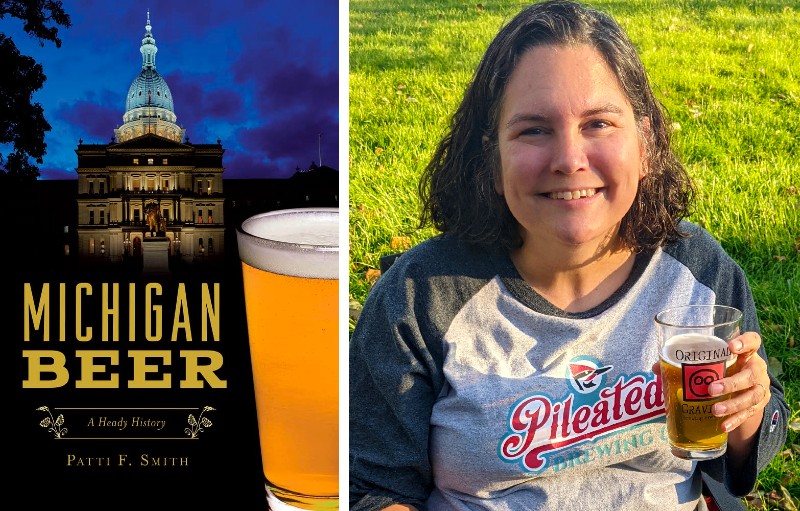
Patti F. Smith's introduction in her new book, Michigan Beer: A Heady History, may activate your thirst to take a seat at one of the state's many current establishments:
Like the waves that crash in the magnificent Great Lakes that surround Michigan, beer and brewing has constantly moved and evolved in the state. […] Come along on a trip through the history of Michigan’s brewers and beer as we explore, region by region, the history of brewing in our great state.
But Michigan Beer reports on mainly pre-World War II businesses and their beverages. Smith highlights the “first wave of brewers” who came to the U.S. from countries like Germany and Prussia. She also describes the “second wave” who endured or sprung up after Prohibition and also struggled during WWII. The “new wave” gets a dedicated chapter at the end of the book regarding breweries in the 1980s and onward.
Michigan Beer is organized by regions of the state: the Upper Peninsula, Western Michigan, Mid-Michigan, Eastern Michigan, and Southeast Lower Michigan, plus the “new wave” not divvied up by location. Each chapter spotlights numerous corners of the state from Copper County and Escanaba to Grand Rapids and Detroit, with many more cities showcased. Readers can look up their hometown, college town, or favorite vacation spot and see what breweries were once pouring there.


































